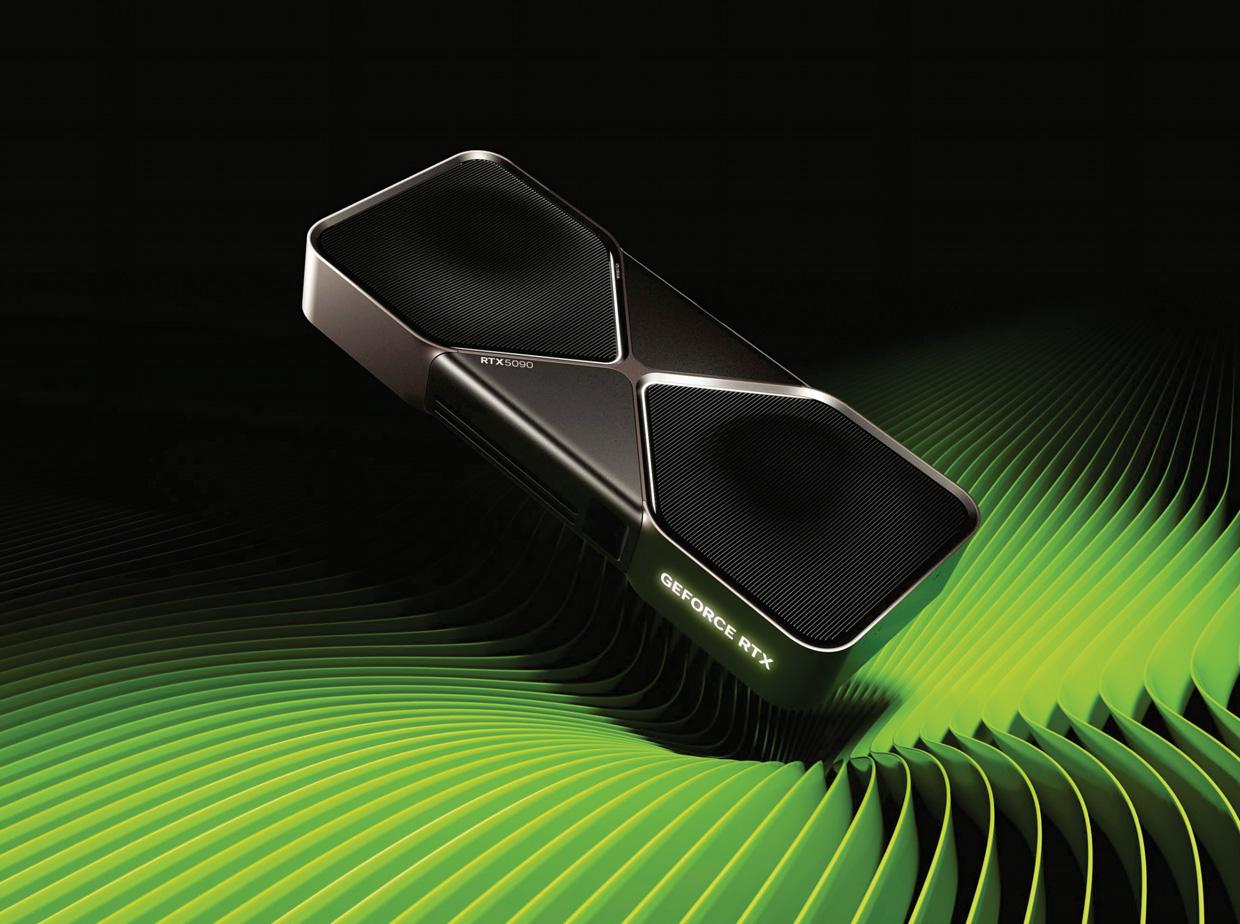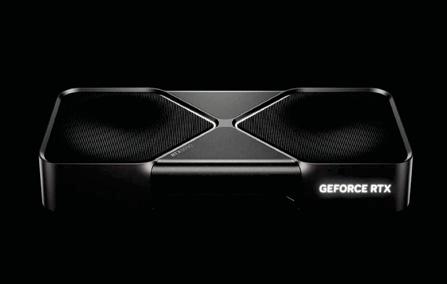Poging GOUD - Vrij
SOFT LAUNCH
PC Gamer
|April 2025
Nvidia's 5-SERIES launch placed AI benefits above native rendering. Why?

After all those months of waiting, of slightly mistranslated speculative reports and questionable photos of graphics cards in unnamed factory floors, the 5-series family had gone public. Hooray! And in several cases, the speculation was bang on: Nvidia's new flagship gaming card, the RTX 5090, cost a shade under £2,000, featured 32GB of memory as many pre-launch reports suggested, and would you believe it, it offered a significant performance advantage over the RTX 4090.
At least, that was the inference behind all the bar charts and the split-screen videos Nvidia released to accompany the 5090's launch at CES. But upon slightly closer inspection, the quadrupled performance in games like Alan Wake 2 and the longstanding benchmark for neon signs reflecting in puddles that is Cyberpunk 2077 are the result not of native rendering performance, but of AI-generated frames.
And that caused a collective furrowing of brows and grinding of teeth in certain corners of the community. Understandably so: these are expensive graphics cards Nvidia's bringing to market. We're paying for hardware, but being convinced of that hardware's virtues by the performance of software. The software in question is the new Multi-Frame Generation mode, only available on 5-series cards. As its name cunningly implies, you get three AI- generated frames with this tech for every one that 4-series cards are capable of. Hence all those bar charts with quadrupled framerates.

Dit verhaal komt uit de April 2025-editie van PC Gamer.
Abonneer u op Magzter GOLD voor toegang tot duizenden zorgvuldig samengestelde premiumverhalen en meer dan 9000 tijdschriften en kranten.
Bent u al abonnee? Aanmelden
MEER VERHALEN VAN PC Gamer

PC Gamer
UNCIVILISED
DOOM: THE DARK AGES is indulgent and deliciously violent, but surprisingly safe
6 mins
August 2025

PC Gamer
“Nothing says ‘don’t notice me’ like fighting 14 people at once...”
Undercover in LIKE A DRAGON GAIDEN: THE MAN WHO ERASED HIS NAME
2 mins
August 2025

PC Gamer
OUTWORLD STATION
This sim is threatening to devour hours of my time
2 mins
August 2025

PC Gamer
ROUGH GEM
BLADES OF FIRE doesn't quite manage to bring the heat
6 mins
August 2025

PC Gamer
RECORD SCRATCH
LOST RECORDS: BLOOM & RAGE TAPE 2 leaves more dead space than game
2 mins
August 2025

PC Gamer
“As you unlock new librarians, you’re going to need a lot of cards”
Though it does itself no favours, LIBRARY OF RUINA presents a stacked deck I just can’t resist
2 mins
August 2025

PC Gamer
The Spy
BUT WHO WATCHES THE SPY?
2 mins
August 2025

PC Gamer
BEING CHARMING IN VAMPIRE: THE MASQUERADE BLOODLINES
The most cultured thug in town gets more than he bargained for.
8 mins
August 2025

PC Gamer
Eriksholm: The Stolen Dream
Entry-level stealth paired with high-end period drama
5 mins
August 2025

PC Gamer
ALL BY MYSELVES
Fraught and flexible, THE ALTERS expertly blends storytelling with survival
6 mins
August 2025
